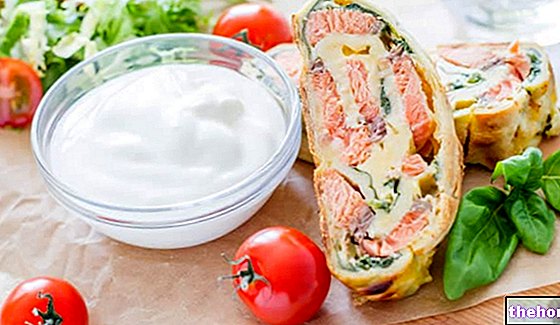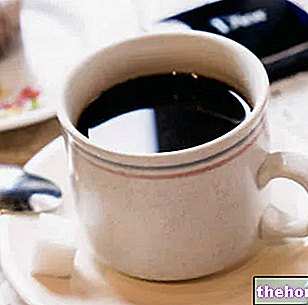Synonyms for sugar: carbohydrate, glycide, carbohydrate, carbon hydrate.
By cooking food, various nutritional alterations are created, which are interesting both from a health and hygienic-food point of view, as well as from a technical and culinary point of view; of these, some can be considered positive while others, on the contrary, are decidedly unfavorable.
Increased solubility of simple sugars - a positive aspect

Dry cooking simple sugars - downsides
When dry, cooking sugar (sucrose) in cooking (160 ° C) changes structure: from crystallized (granulated sugar) to liquid (viscous); by further increasing the temperature (170 ° C) the caramelization, that is a process of further dehydration which recombines the oxygen atoms of the sugar and favors a molecular re-arrangement producing numerous compounds, simple or complex, volatile and non-volatile. The caramel thus obtained, it is brown in color, has a dense consistency and a typical smell of "burnt sugar"; represents a set of different components, including: glucosans, aldehydes, ketones, etc. and it also plays an important role as a "coloring" food additive in the confectionery industry (E150a, E150b, E150c, E150d).
Some will wonder why caramelization is a negative aspect of cooking simple sugars; it is easy to say: at such high temperatures, the production of toxic catabolites inevitably also takes place hydroxymethylfurfural (HMF) e acrylamide; this also happens by constantly monitoring the achievement and stabilization of the minimum caramel production temperature. Ultimately, caramelization represents a negative aspect for health, as it often causes the release of hydroxymethylfurfural (HMF), which is a toxic and volatile lethal molecule. in the rat at about 50-100mg / kg-1 of body weight (100mg / hg), and acrylamide, which is a carcinogenic molecule.
Cooking complex sugars (starch) in water - positive aspects
Starch is a complex sugar that is cooked by cooking in water at 65-70 ° C it swells by absorption (initially only the hydroxyl groups of amylose and amylopectin are involved in the reaction); by increasing the temperature up to 90-95 ° C, the reaction accelerates and a gelatinous mass is formed which, by reducing the temperature, acquires consistency gelling (see "scotta" pasta). A similar reaction is extremely useful in culinary processes that require the "thickening of liquid substances," so much so that some food additives are composed of simple cereal or legume flours, or the relative extracted starches.
Dry cooking complex sugars (starch) - positive and negative aspects
Unlike cooking in water, which has no negative effects on health, cooking complex sugars dry at high temperatures has both positive and negative implications.
On the positive side, there is a "partial hydrolysis of the molecules into simpler segments such as: dextrins, maltose and glucose, with a consequent increase in the digestibility of the food". However, by prolonging the exposure to dry and high heat, these molecules undergo caramelization in a similar way to that of simple sugars (with all the negative aspects of the case).
In cooking foods rich in complex sugars but with protein traces, it can also determine the triggering of the Maillard reaction (union of simple sugars with amino groups of proteins); in culinary practice this reaction is quite evident in baking bread which, from 180 ° C onwards, it tends to form a brown, crunchy and aromatic surface crust (molecules involved by Maillard: gluten and hydrolyzed starch residues).
NB. The Maillard reaction confers pleasantness to foods but, if excessively activated, also favors the release of toxic molecules such as hydroxymethylfurfural - HMF and acrylamide.
In conclusion, cooking sugars causes positive and negative effects depending on the temperature and cooking method (dry or in water). Cooking in water never causes damage to health as it is always around 100 ° C; in boiling water, simple cooking sugars (sucrose) drastically increase their solubility and complex ones (starch) tend to gel, carrying out a thickening action; on the other hand, strong and dry cooking of sugars is not harmless. To simple ones it causes liquefaction and then caramelization, predisposing cooked foods to the Maillard reaction; to complex ones (starch) it causes an increase in their digestibility ( positive) ... BUT also in this case it increases the predisposition to the Maillard reaction, essential in the formation of the organoleptic and gustatory characteristics of the cooked food, but also predisposing to the release of toxic and / or carcinogenic molecules.




























